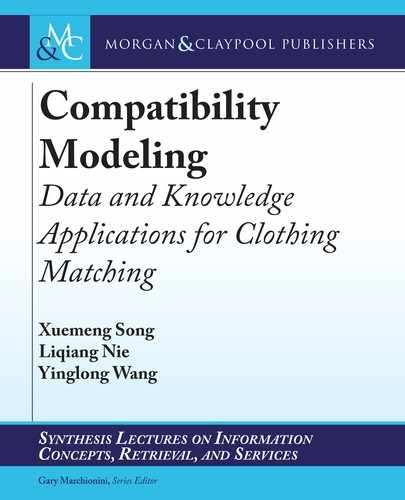
6.4. EXPERIMENT 69
have the following objective function:
L D
X
.m;i;j;k/2D
l
bpr
p
m
ij
; p
m
ik
C
2
‚
F
2
F
;
D
X
.m;i;j;k/2D
ln
p
m
ij
p
m
ik
C
2
‚
F
2
F
; (6.8)
where is the non-negative hyperparameter, the last term is designed to avoid overfitting, and
‚
F
refers to the set of parameters (i.e., W
x
k
, b
x
k
, ˛, ˇ
m
, ˇ
j
,
m
,
j
,
v
m
and
c
m
) of the model. Fig-
ure 6.3 illustrates the workflow of our model, and the optimization procedure of our framework
is summarized in Algorithm 6.3.
General Compatibility
Modeling
Personal Preference
Modeling
Top Bottom User
Figure 6.3: Workflow of the proposed personalized compatibility modeling framework.
6.4 EXPERIMENT
To evaluate the proposed method, we conducted extensive experiments on the real-world
Dataset II by answering the following research questions.
• Does the proposed GP-BPR outperform the state-of-the-art methods?
• What is the contribution of the personal preference modeling as compared to that over
the general compatibility?
• How does GP-BPR perform in the application of the personalized complementary fashion
item retrieval?
In this section, we first detail the implementation and then provide the experimental re-
sults on each of the above research question.
..................Content has been hidden....................
You can't read the all page of ebook, please click here login for view all page.
